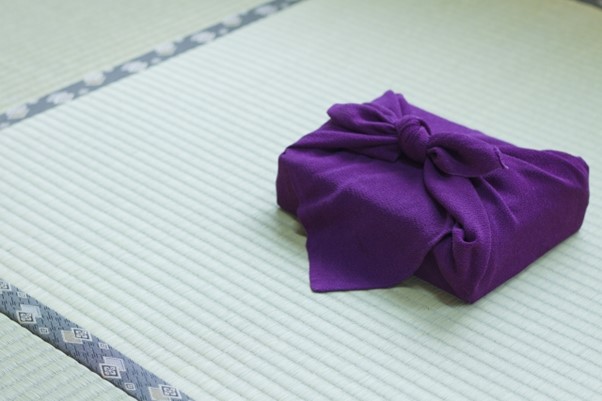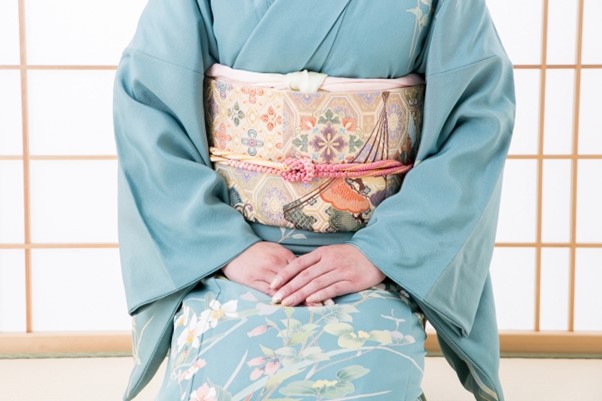
Chopsticks and greetings manners are also introduced.
It is often said that it is difficult to follow the etiquette of Japanese food because of the peculiarities of the book’s dining etiquette.
However, there is no need to feel uneasy if you keep basic manners in mind.
In this article, we will explain how to use chopsticks and other useful Japanese food manners that you should know at least when enjoying Japanese food.
If you check them before you go out to eat Japanese food, you will be able to enjoy Japanese food with confidence.
◊Japanese Attitudes Toward Manners

At the root of Japanese dining etiquette is consideration for the other person and appreciation for the creator.
This has led to the development of manners in chopstick handling and seating arrangements.
・The idea that one’s character is expressed in the way one uses chopsticks
In Japan, chopsticks are said to have been one of the “sacred utensils” offered to the gods in ancient times.
Eating every last morsel of rice from a bowl with chopsticks is an expression of gratitude to the creators and producers of the food. Japanese people also like to handle everything with care, and they believe that a person’s politeness is reflected in his or her beautiful gestures.
Thus, in Japan, the ability to use chopsticks well is not only a matter of technique, but also a reflection of one’s personality.
・The Left-Higher Concept
According to international standards, the standard is to arrange items on the right side. However, the ancient Japanese tradition is the opposite of the international standard, which is left-higher, so kimonos, fusuma (sliding doors), and shoji screens are also basically arranged with the left side up.
In Japan today, right-high and left-high are mixed, as some international standards have been adopted in some cases. Do not be surprised if the left side of the room is not considered to be the most appropriate.
◊Let’s learn chopstick etiquette.

One of the most important aspects of dining etiquette in Japan is the use of chopsticks. Let’s take a look at the basic usage of chopsticks.
Basic Use of Chopsticks
Hold the chopsticks two-thirds of the way from the chopstick tip (the one that holds the food).
1.hold the lower chopstick between the base of your thumb
2.Support the lower chopstick between the base of your thumb and the first joint of your ring finger.
3.Hold the upper chopstick with the thumb, index and middle fingers as if holding a pen.
You can hold them with either your left or right hand, but since most things in Japan are made mainly for right-handed people, it is better to hold them with your right hand if possible, so that the movement is smoother.
Next, how to move it.
When you hold an object between chopsticks, move only the top chopstick up and down with your middle and index fingers, but not the bottom chopstick. The thumb is used to support the upper chopstick. By opening and closing the chopstick tips, you can pinch any type of food, from large items such as stew to small items such as grains of rice.
When the thumb, which acts as a support, moves, the upper chopstick and the lower chopstick cross each other to form “crossed chopsticks. Crossed chopsticks are difficult to grip and tend to cause poor posture. It is not a beautiful gesture and makes the other person uncomfortable. Also, “clenched chopsticks,” in which the chopsticks are held with the hands in a “goo” position, not only looks unattractive, but is also considered an offensive posture to the other person, so be careful.
◊Five NGs of Chopstick Manners
There are several things that should not be done in chopstick etiquette. Here we introduce five of the most important ones to avoid: “chopstick passing,” “erecting chopsticks,” “sleigh chopsticks,” “neburi chopsticks,” and “stabbing chopsticks.
Chopstick passing” refers to passing food directly from one person’s chopsticks to another. In Japan, chopstick passing is done after the cremation of the dead, when the bones are picked up. This act is associated with the word “death,” and should be avoided.
Tatehashi” is the act of sticking chopsticks into a bowl of rice. This is also associated with death, as there is a Japanese custom of sticking chopsticks into the rice offered to the deceased.
Sora chopsticks” is the practice of putting food back on the plate after it has been picked up with chopsticks, without bringing it to the mouth. Once the food has been taken with chopsticks, it should not be returned to the plate. If you realize after taking the food that you cannot eat it, you should pull it to the edge of the plate in your hand. There is no need to force yourself to eat it.
Neburi chopsticks” means licking the tips of your chopsticks. It is worrisome to have food on the tips of your chopsticks, but it is also unsightly and makes the people you are eating with uncomfortable.
Sashi-chopsticks” is the act of sticking chopsticks into the food like a fork. It looks as if you are checking the fire, and it is disrespectful to the person who made the food.
Recently, more and more restaurants are providing spoons and forks for foreign customers. If you cannot use chopsticks properly, you may enjoy your meal with a spoon and fork.
◊Manners by Meal Menu

Here we introduce how to eat “assorted sushi, grilled fish, and tempura”, which are easy to be confused about how to eat.
・Sushi
Sushi may be eaten with either your hands or chopsticks. The accompanying ginger (gari) is eaten with chopsticks.
Using either your hands or chopsticks, turn the sushi on its side, dip the ingredients in soy sauce, and eat it in one bite. If you cannot eat it in one bite, do not put it back on the plate and continue eating.
If you are not ordering a course, there are no rules about the order in which you should order your sushi. If you order in the order of light to fatty fish, you can easily distinguish the difference in taste and enjoy the taste.
・Grilled fish
If there is arrowroot ginger or decorative leaves on the fish, move them to the back of the plate before starting to eat the grilled fish. If it is a fillet, eat from left to right.
Fish with a tail head is placed so that the head is on the left. The procedure is as follows. 1.
1. eat the upper half of the front side (back side) from left to right
Eat the lower half of the front side (front side) from left to right. 3.
3) As the middle bone is visible, insert chopsticks from the tail (right side) between the meat and bone on the underside to float the bone. 4) Place the floated bone on the plate.
4. bring the raised bone to the left side of the plate and place it in the empty space. 5.
5. eat the upper half of the back side (back side) from left to right
6. eat the lower half of the back side (front side) from left to right
Grilled fish is cooked well, so you will not have trouble removing the meat.
・Tempura Platter
Tempura platter should be eaten from top to bottom, front to back, as arranged.
Cut the tempura into bite-sized pieces with chopsticks before taking them into your mouth. If you cannot cut the tempura with chopsticks, you may bite into it, but avoid putting it back on the plate as it will show the bite marks. Keep the portion that does not fit in your mouth with the chopsticks and continue to finish it.
When dipping the food in ten-tsuyu, dip the bottom third of the food in it. If you are worried about the ten-tsuyu dripping down, bring the dish with the ten-tsuyu to your mouth. It is bad manners to use your hands as a plate.
◊Other Dining Manners You Should Know

So far we have looked at chopsticks and meal-specific manners. From here, we will explain the manners of greetings and dress at mealtime.
・Greetings before and after meals
Both express gratitude to the person who prepared the meal, the person who prepared the food, and the food itself for providing life.
In some countries and regions, people pray to God before the meal. In Japan, “Itadakimasu” and “Gochisosama” are common greetings for meals, even if people of different faiths and backgrounds use them.
・Leave as little as possible of the meal served
In Japan, it is good manners not to leave any food served at a table. This is because it is considered to show gratitude to the person who prepared the food and the ingredients by eating up the entire meal.
In many other parts of the world, it is good manners to intentionally leave small portions of food. However, leaving food uneaten in Japan can make the person you are sharing the meal with or the person who prepared the food think that it was not to their taste.
If you cannot finish your meal, it is acceptable to leave some of it behind. In that case, express your gratitude to the person who prepared the meal.
・Dress for Japanese food
There is no dress code for kappo and ryotei restaurants that serve Japanese food, as there is for high-end Western restaurants.
It is possible that you will have to take off your shoes in the room, so it is advisable to wear shoes that are easy to remove. Also, considering the possibility of having to sit on your knees, it is recommended that you avoid wearing mini-skirts, etc., and that you wear clothes that are easy to collapse on your knees.
In addition, many Japanese dishes enjoy the delicate aroma of soup stock and condiments. For this reason, it is advisable to avoid overly strong perfumes and the like as much as possible.
◊Appreciation is important.

So far, we have looked at the manners of eating in Japan. All manners lead to “not offending the people you eat with” and “gratitude to the person who prepared the meal, the person who provided the ingredients, and the ingredients themselves for providing life.
We should remember to observe good manners, but consideration and gratitude are most important. Please enjoy your meals in Japan without being too afraid of manners.
Q.Do I absolutely have to use chopsticks for meals?
A.Many places provide forks and spoons these days.
If it is absolutely difficult to use chopsticks, let them know that you would like a fork or spoon.
Q.What should I do if I absolutely cannot finish the meal?
A. It is good manners to finish all the food served to you, but if it is absolutely difficult, you do not have to finish it.
You should say to the person who prepared the meal, “I’m sorry I couldn’t finish it, it was delicious,” and express your gratitude to him or her for preparing the meal and the fact that it was not left because it was not to your taste.

